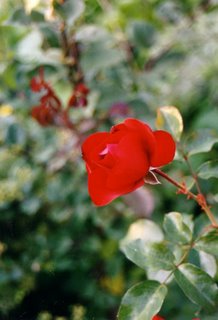James Rose is rightly remembered as one of the most influential modern landscape architects coming from the Post-World War Two period. Modern garden design today owes much to his vision and accomplishments. His Ridgewood, NJ home continues to be a major source of inspiration for me.



Materials aside from plants included:
Click image to enlarge


























Read More..



Materials aside from plants included:
woodglasstranslucent and transparent plasticcinder blocksconcreteplastercopperstonespaintsteel wirepea gravel
The following text has been lifted directly from the James Rose Centers website:
For its unique modern spatial language, its expression of an alternative approach to conventional post-war suburban residential development and as the constantly changing laboratory of one of landscape architectures most inventive minds, the Ridgewood, NJ home of James Rose is one of the twentieth centurys most important landscapes.
The Vision
Rose began the design while in Okinawa during World War II with a model he made from scraps found in construction battalion headquarters. "I wanted the spaces flowing easily from one to another, divided for privacy and for convenience." Rose wrote in 1943. "I wanted the arrangement flexible and varied. Most of all, I wanted all this integrated with the site in a design that seemed to grow, to mature, and to renew itself as all living things do."
The RealityConstructed in 1953, Rose described his home as a "tiny village" built on an area half the size of a tennis court. It was a composite of three buildings - a main house for his mother, a guesthouse for his sister, and a studio for himself. This experimental landscape achieves a fusion of indoors and outdoors perhaps unequalled by other leading designers of this time. Rose later described it as "neither landscape nor architecture, but both; neither indoors, nor outdoors, but both."
The Metamorphosis
It was conceived to accommodate rapid twentieth century change. "I decided to go at the construction as you might a painting or sculpture." Rose wrote. "I set up the basic armature of walls, and roofs, and open spaces to establish their relationships, but left it free in detail to allow for improvisation. In that way it would never be "finished," but constantly evolving from one stage to the next - a metamorphosis," Rose wrote, "such as we find commonly in nature."
Consistent with this, the design changed dramatically during the almost forty years Rose lived here. From 1961, when Rose was invited by the Japanese government to participate in a World Design Conference (WoDeCo), he found a mirror to his modern American design sensibility in the ancient culture of Japan. In changes such as the addition of the roof garden and zendo in the early 1970s a fusion of ancient East and modern West is effected as Rose compares the filigrees of plant forms to the filigrees of structure. "In the bare architectural outline is a pattern of organic (rather than cosmetic) decoration and an integral division of space."
Click image to enlarge






























 These table tops are made of durable material, variations of stone, granite, marble or even porcelain. Custom sizes and shapes or hearths and fire pits can be fabricated, along with a custom burning system to fit perfectly.
These table tops are made of durable material, variations of stone, granite, marble or even porcelain. Custom sizes and shapes or hearths and fire pits can be fabricated, along with a custom burning system to fit perfectly. 

 www.BianchiDesign.com Master Landscape Architectural Designer, Kirk Bianchi discusses the Serenity in your Own Backyard. This Award Winning Pool ...
www.BianchiDesign.com Master Landscape Architectural Designer, Kirk Bianchi discusses the Serenity in your Own Backyard. This Award Winning Pool ...





 One of the most common problems this last growing season was Powdery Mildew! We had quite the wet growing season in 2006 making it difficult for many of our favourite plants to thrive.
One of the most common problems this last growing season was Powdery Mildew! We had quite the wet growing season in 2006 making it difficult for many of our favourite plants to thrive. Throughout the latter part of the season I watched as one by one my vegetable plants withered away due to either powdery mildew or some other fungus.
Throughout the latter part of the season I watched as one by one my vegetable plants withered away due to either powdery mildew or some other fungus.
 Low water requirement, shade loving plants provide an easy maintenance and aesthetically pleasing look. After the removal of an overgrown juniper which encroached on the sidewalk, more appropriate plantings for the size of the space were added.
Low water requirement, shade loving plants provide an easy maintenance and aesthetically pleasing look. After the removal of an overgrown juniper which encroached on the sidewalk, more appropriate plantings for the size of the space were added.





